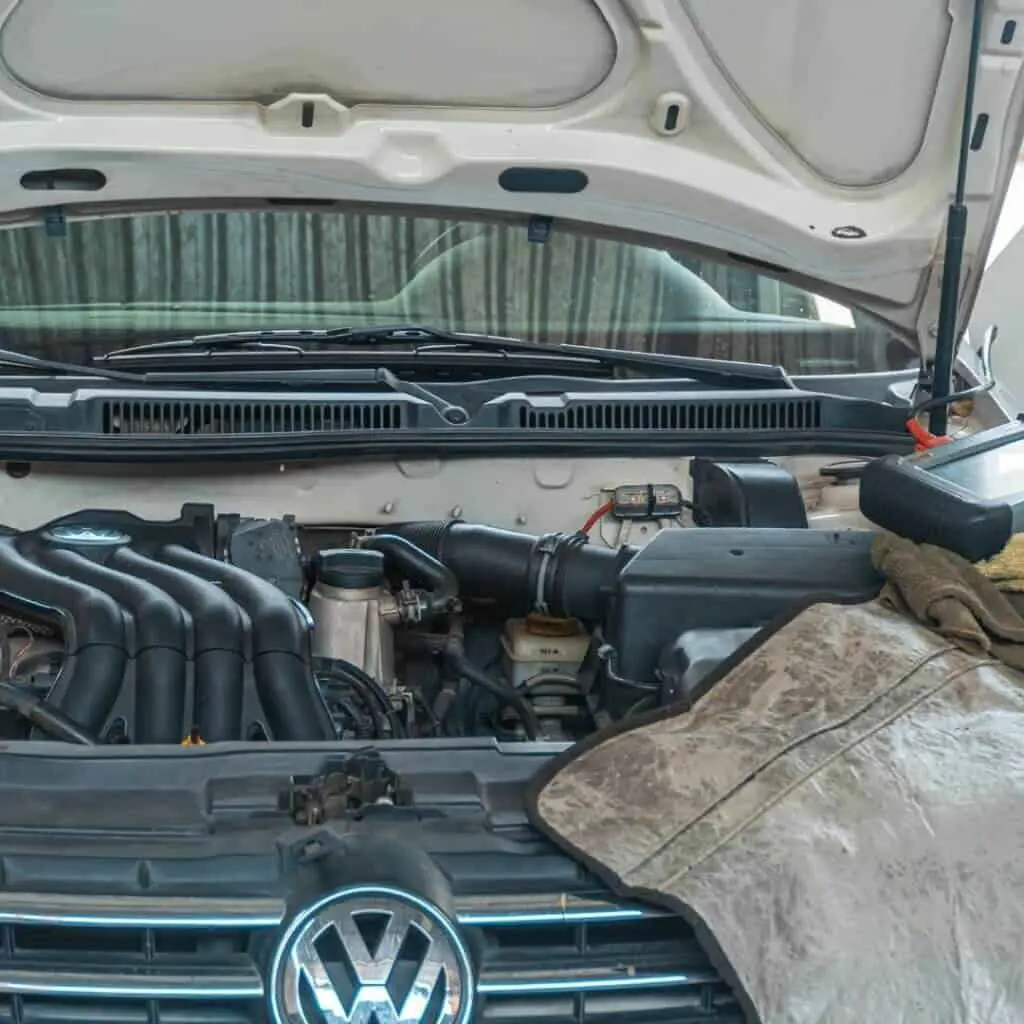Do you want to know more about potencial Mitsubishi L200 problems?
The Mitsubishi L200 can haul and carry where other trucks will falter, and this makes it one of the most versatile commercial vehicles for sale. The fact that buyers consider this truck as an alternative to conventional SUVs underlines the breadth of its ability. The L200 is an accessible vehicle to drive regardless of its incredible capabilities.
The L200 range comprises 4Life, Trojan, Warrior Barbarian, and Barbarian X models. The 4Life is the only one that comes in Club Cab and Double Cab body styles while the rest of the range only comes as a four-door Double Cab.
There’s one engine available in the Mitsubishi L200, a 2.3-liter four-cylinder diesel producing 148bhp. Both manual and automatic transmissions are six-speed.
The engine of the L200 itself isn’t as powerful as most rivals, but 400Nm torque is readily available and smooth compared to some rival models.
However, with a 4×4 capable of hauling large weights, there is bound to be some wear, tear, and eventual failing of some parts. In this article, we’ll take you through some of the common problems of the Mitsubishi L200 so that you know what to look out for if you own this model or if you’re planning on purchasing one in the future.
Mitsubishi L200 Problems

The Mitsubishi L200 is a reliable truck overall. But like every good thing, there’s usually a catch. So far, no truck has been produced that is 100% perfect.
Some of the most common Mitsubishi L200 problems include faulty clutch, malfunctioning AC, alternator problems, fuel pump failure, heat matrix issues, leaf springs crack, head gasket problems, ABS light sensor malfunctions, fuel filter faults, and engine problems.
- Clutch Problems
This is one of the most common Mitsubishi L200 problems; the clutch slipping fuel to an oil leak fault. Oil leaks occur below the crankshaft oil seal when the oil goes past a certain level. This would mean that topping off the oil will only make matters worse.
Owners of the L200 have also experienced clutch problems including difficulty shifting gears, slipping of gears, and grinding noises when turning. These can be caused by a worn-out clutch, a malfunctioning clutch cylinder, or issues with the clutch hydraulics.
Older models of the Mitsubishi L200 are also known to develop a noisy squealing clutch. This would be most pronounced at low revs or when idling and gets worse if left. The solution is usually to get a new clutch bearing. [1]
- Leaf Springs Crack
Leaf springs are a known weakness. The leaf springs of the L200 are known to crack if the owner regularly carries heavy loads or tows heavy trailers. The only sign you may notice may be a knocking sound from either of the rear wheels.
Some owners advise putting grease on the leaf springs to prevent them from squeaking, but doing this will only attract grime and increase wear.
Fixing this can get very expensive as both sides will need to be fixed. Fixing one side will lead to a lopsided vehicle. Broken spring leaves can be repaired depending on the overall condition of the spring pack.
Having a repair shop replace your leaf springs can ensure that the correct spring is installed safely for your vehicle and load capacity.
- Fuel Pump Problems
The fuel pump suction control valve adjusts the pressure inside the common rail. It tends to suddenly pack up, and the symptoms are usually power surging or lack of power. A pump problem can be diagnosed by spotting filings in the fuel filter housing- this is a sure sign that the fuel pump is failing.
Fuel pump problems need to be dealt with as quickly as possible to avoid increasing the damage and potential cost of repair.
Drivers have also complained of encountering some faults with their fuel filters somewhere down the line. This is because the fuel filters are also prone to clogging after 30,000 to 40,000 miles. In addition, some cheaper diesel types don’t contain lubricant or cleaner to keep the filters in premium condition, and this fault may occur. [2]
While a faulty fuel filter is the most likely suspect, there are other possibilities to be examined before the filter is replaced. The first is for air leakage in the fuel pipes and the filter.
- Heater Matrix Problems
The heater matrix is part of the vehicle’s cooling system, and it reuses heat from the vehicle’s coolant to heat the cab. However, it is known to fail quite early and leak. This results in the smell of antifreeze working its way into the cab and fogging interior windows.
If your heating matrix is leaking- and you most likely know because of the antifreeze smell while driving or condensation windows- it can be tricky to replace because of where it’s location. This means you will have to spend some time getting to it. [3]
- Head Gasket Problems
This is not a very common fault but a fault nonetheless. A problem with engine overheating is also known to affect the head gasket in the Mitsubishi L200. [4]
The seal between the cylinder heads and the engine block is quite solid but can eventually leak. Beware of a bubbling sound once the engine is turned off as this is a sign of the radiator failing caused by the system over-pressurizing.
- ABS Sensor Light Fault
The traction control light is a common fault people find on the L200, so you’ll be wise to pay extra attention to your dashboard. The only way to know the real cause of this issue is to run proper diagnostics on the vehicle.
However, most often than not, it will be a case of faulty sensors in your ABS.
- Engine Problems
Drivers have reported their Mitsubishi L200 losing power because of clogged air filters or a faulty turbine. It is also common with the Mitsubishi for a turbo to fail, often caused by overheating. There are also additional reports of the turbo breather pipe getting displaced which can cause engine failure.
- AC Problems
One of the most common Mitsubishi AC problems is that the AC doesn’t blow cold air. Many things can cause this which includes, a low refrigerant level, a dirty air filter, or a problem with the compressor.
If your L200 AC isn’t blowing cool air, the first thing you’ll need to do is to check the refrigerant level and top it off if need be. If the filters are dirty, you’ll simply need to replace them. [5]
However, if the compressor is the issue, you’ll have to visit your mechanic to get that fixed.
- Alternator Problems
The alternator is the power station that converts mechanical energy from the engine to electricity. It not only powers all the electrical components in the vehicle but also charges the battery while the engine is running.
The common symptoms of a bad alternator are the red battery warning light on the dashboard, electrical issues, dim lights, slow cranking, dead battery, and stalling engine.
Related: Mitsubishi Pajero Problems
Possible Solutions to Mitsubishi L200 Problems

The Mitsubishi L200 problems are easily managed. Some problems like low refrigerant and clogged filters can easily be fixed at home.
But problems that involve the replacement of certain parts will require the help of a mechanic. Also, problems that can’t be identified will need you to take a trip to the repair shop.
Most Mitsubishi L200 problems can be prevented by proper maintenance and running regular diagnostics on the vehicle.
Read Also: Mitsubishi ASX Problems
Conclusion
If you’re looking for a pick-up from this era, this L200 is a difficult option to ignore. That’s not to say that the Mitsubishi L200 is without its faults.
But that doesn’t change the fact that the Mitsubishi L200 is a reliable and hardworking truck that is perfect for those who need a vehicle that can handle tough tasks.
Read Also: Mitsubishi Colt Problems





